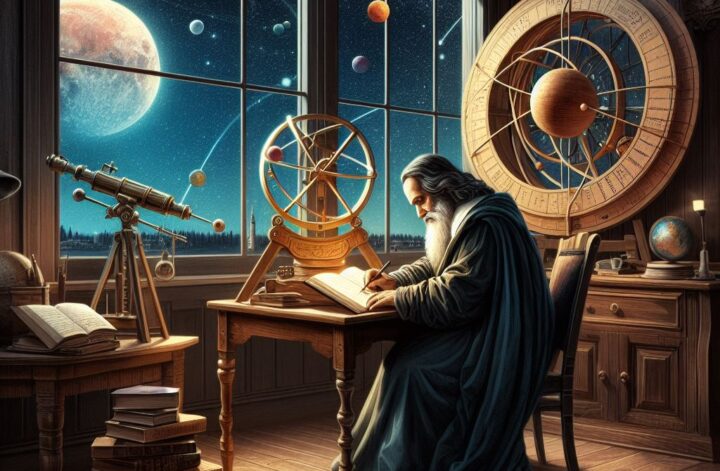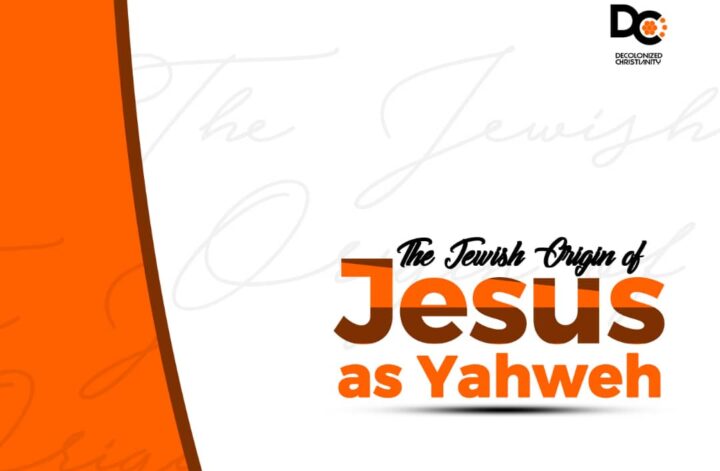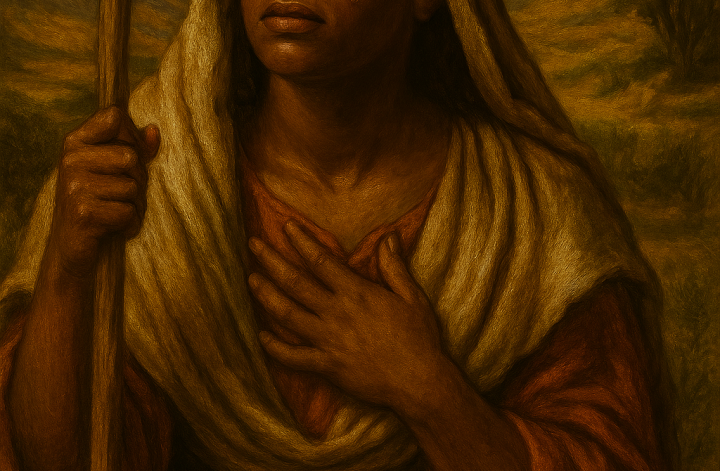An Everlasting Myth
Every schoolchild knows something about Galileo Galilei. She may not know that the 16th-century Italian scientist studied at the University of Pisa or designed telescopes that he later used to observe mountains on the Earth’s moon. But she knows Galileo was a bold scientist who stood up against the Pope and the Catholic Church with his scientific findings and got severely punished. Indeed, even today, people continue to formulate Galileo’s friction with the Church as an archetype of science versus religion or reason versus faith. In many people’s minds, religion is just the sort of thing that hinders scientific progress, as the story of Galileo showed. This story is a myth, an untruth, as I shall show below.
There was, indeed, significant friction between the devout Catholic scientist Galileo and the Roman Catholic Church. And with the benefit of hindsight, the Church was wrong in its position against Galileo. However, at the time, the Church was far more scientific in its stance than Galileo. In any case, it certainly was not a case of religion versus science. Galileo was not an atheist, and the Church was not opposed to the findings of Galileo. Indeed, some expert astronomer representatives of the Church looked to the heavens with telescopes and saw what Galileo claimed to see. The problem lay with Galileo’s interpretations of what he saw. To appreciate the gravity of the matter, we need to understand the 16th-century world of Galileo a bit.
Nicholas Copernicus
Twenty years before Galileo was born, a famous Catholic priest and astronomer, Nicholas Copernicus, died. Copernicus’ study had led him to propose a heliocentric theory in astronomy. The earth moves about the stationary sun—the view that Galileo would later aggressively push. Copernicus, unlike Galileo, was a bit more cautious about his findings. A fascinating fact of history is that Copernicus was not even the first (or second or third) to consider the possibility of the earth’s motion. As Copernicus himself was aware, people have contemplated the possibility of the earth’s motion some 2000 years before him. In his letter to Pope Paul III, which prefaced his book, Copernicus wrote: “I found first in Cicero that Hicetas [of Syracuse, fifth century B.C.] had realized that the Earth moved” (Kuhn 142). Furthermore, Copernicus also knew of others before him who contemplated this idea. He found in Plutarch, first century AD Greek historian and philosopher, other scholars with similar views (Kuhn 142):
The rest hold the Earth to be stationary, but Philolaus the Pythagorean [fifth century B.C] says that she moves around the [central] fire on an oblique circle like the Sun and Moon. Heraclides of Pontus and Ecphantus the Pythagorean [fourth century B.C.] also make the Earth to move, not indeed through space but by rotating round her own center as a wheel on an axle from West to East.
So, we see that the idea of a moving earth was not entirely novel in the 16th century. There were even contemporaries of Copernicus who held such a view. Thomas Kuhn writes of “the fifteenth-century Cardinal, Nicholas of Cusa,” who “derived the motion of the earth from the plurality of worlds in an unbounded Neoplatonic universe” (144).
But why was Copernicus even interested in a moving earth at all? He was interested in this un-commonsensical idea for a similar reason as Albert Einstein was committed to his yet counterintuitive postulate that the speed of light is constant in all inertial frames: moving the earth solves a major scientific problem and holds much promise for scientific progress. In other words, it was not that Copernicus could show that the earth moved. (Today, some people who are not trained in astronomy yet struggle to understand the notion of a moving earth.) On the contrary, Copernicus realized that if the earth moved, he could provide a neat mathematical explanation for the positions of the planets. As an extra add-on, he would also solve a non-minor problem that the Church was very interested in—the problem of a reliable calendar. So, an earth in motion for Copernicus was primarily theoretical. The astronomy of the day had become so confused, being an admixture of several somewhat incoherent ideas, and the result was not pretty. Copernicus observed concerning the astronomers of his day (as quoted in Kuhn, 139):
Nor have they been able thereby to discern or deduce the principal thing—namely the shape of the Universe and the unchangeable symmetry of its parts. With them it is as though an artist were to gather the hands, feet, head and other members for his images from diverse models, each part excellently drawn, but not related to a single body, and since they in no way match each other, the result would be monster rather than man.
So, in Copernicus’ assessment, the state of astronomy was monstrous, and the single hypothesis of moving the earth would clean up the monster to reveal the beauty within.
There was a question on everyone’s mind: Suppose the Copernican idea proves to be as helpful as it promises by moving the earth and fixing the sun. What/who is to say that this is not actually (or ontologically) how things are? That is, why not conclude that the sun is, in fact, fixed while the earth moves? Herein lies the central issue of the so-called Galileo Affair.
Well, the scientific standards of the day required evidence for this conclusion, and there was none—the scientific confirmation of the earth’s revolution would take another 200 years. Furthermore, the Galilean debate took place within the context of the Roman Catholic Church, which affirmed the authority of the Bible.
It is worth noting a little detail about the mindset of some of the Church’s theologians concerning scientific findings that contradicted their reading of the Bible. A case in point is the Jesuit Cardinal Robert Bellarmine, Pope Paul V’s theologian. In a letter dated 12 April 1615, Bellarmine writes about his conviction that the Copernican idea is untenable yet approves its treatment as a hypothesis. But in the unlikely event that Copernicus’ theory should prove correct, the Cardinal wrote (as translated by Finocchiaro, 67-69):
then one would have to proceed with great care in explaining the Scriptures that appear contrary; and say rather that we do not understand them than that what is demonstrated is false. But I will not believe that there is such a demonstration, until it is shown me.
In other words, this top Church official would re-evaluate his understanding of the Scriptures rather than continue to insist that a scientific finding is false. He would, however, make this move only on evidence—the kind that was not available to Galileo. (We should here recall the biblical hermeneutics points discussed in Part 2.)
So, what’s Up with Galileo?
When Galileo looked to the heavens with his telescopes and saw incredible things like a mountain on the moon, he became convinced of the truth of the Copernican theory. Furthermore, he spoke of the theory as factually true, not a mere hypothesis. As Cardinal Bellarmine pointed out in his letter, this development “is a very dangerous thing, likely not only to irritate all scholastic philosophers and theologians, but also to harm the Holy Faith by rendering Holy Scripture false” (Finocchiaro, 67-69). This statement here summarizes the odds against Galileo.
Galileo’s move was sure to irritate philosophers and scientists because it essentially claimed that Aristotle and Ptolemy, the foremost intellectuals informing the astronomy of the time, were wrong. This claim was no small matter. The astronomy of this time had been in effect for 1300 years. Aristotle was a highly revered figure in the ancient world. He gave the ancients something close to a “theory of everything” with his immense contributions to theories in politics, ethics, science, metaphysics, logic, aesthetics, music, rhetoric, theatre, and linguistics. Thomas Aquinas even found Aristotle helpful in theology and fondly referred to him as “the Philosopher” in his writings. Such is the stature of the man with whom Galileo was doing battle. Also, we should recall that Galileo, like Copernicus before him, did not have any decisive argument or evidence in his favor. So, his opponents were quite scientific in their stance against him.
Besides, Galileo’s insistence on the Copernican theory as factually true was undoubtedly a source of irritation to theologians—who often also doubled as scientists and mathematicians. Galileo’s claim implied that theologians were wrong. But who was Galileo to make such a claim? First, Galileo was not a trained theologian; his insistence that theologians were wrong would have landed on the deepest nerves. (Stephen Hawking, the eminent astrophysicist, also demonstrated a similar arrogance when he claimed that philosophy was dead in his Grand Design.) It is also worth considering the kinds of people Galileo would have his audience believe were wrong: virtually all the great Church Fathers like Origen, Augustine, Justin Martyr, Aquinas, etc. Second, Galileo had no decisive scientific evidence for his claims. All his celestial observations were reconcilable with the Ptolemaic astronomy of the day, as Tycho Brahe, for instance, demonstrated.
It also did not help that Galileo had a Tony Stark-esque personality. He eventually offended many who started on his side—including the Pope, who would oversee his trial.
The Trial
Many people hold false beliefs about what happened to Galileo in the popular imagination and earlier literature of the Galilean affair. Generations of students have been taught that the Church hunted Galileo for almost twenty years for his belief in a scientific theory that has since been vindicated and that he only escaped being tortured and executed because of his highly placed friends who came to his rescue. In truth, nothing of that sort happened. Galileo was never in danger of execution (Kelly 725), and his actual trial lasted about one hour—not twenty years (Kelly 726).
As the writings of Galileo became famous, they brought technical issues into the public arena. They required a response from the Church to maintain order. Unsurprisingly, many people believed that teaching heliocentrism as being ontologically true amounted to heresy. So, the Church needed to address the matter. But first, the Church must pronounce on heliocentrism before charging anyone believing the doctrine of wrongdoing. Hence, a panel of theologians was appointed to formally pass a judgment on the doctrine on 24 February 1616. They found the doctrine heretical. Two days later, Cardinal Bellarmine informed Galileo of this decision and advised Galileo to desist from defending the doctrine in any way.
Perhaps by an honest mistake or an attempt to outsmart the system, Galileo published another work in 1632 that treated the Ptolemaic and Copernican systems. This work was written in a dialogue form, like many of Plato’s works. Since he put words in the mouths of fictional characters, Galileo could conceal his true beliefs on the matter by using the dialogue form of writing. Nevertheless, the book treated heliocentrism, a formally condemned doctrine, and Galileo was guilty. This is the book that precipitated Galileo’s trial on 10 May 1633. (For a detailed account of the trial, see Kelly’s work cited below).
Final Thoughts
Numerous may be the wrongs of the Catholic Church, but mistreating Galileo is not one of them. This writing aims not to claim that Christians cannot be anti-science; we have good examples of such cases. But the popularity of the Galilean affair is a testament to the widespread bias many moderns hold against religion. Ironically, in this case, the Church much better embodied the spirit of science than Galileo did. Katharine Sanderson writes:
Galileo Galilei was right: Earth moves around the Sun, just as Nicolaus Copernicus said it did in 1543. But had Galileo followed the results of his observations to their logical conclusion, he should have backed another system — the Tychonic view that Earth didn’t move, and that everything else circled around it and the Sun, as developed by Danish astronomer Tycho Brahe in the sixteenth century.
We can hardly fault the Catholic Church for its handling of Galileo.
Works Cited
Finocchiaro, Maurice, A. The Galileo Affair: A Documentary History. Berkeley, University of California Press, 1989.
Kelly, Henry Ansgar. “Galileo’s Non-Trial (1616), Pre-Trial (1632–1633), and Trial (10 May, 1633): A Review of Procedure, Featuring Routine Violations of the Forum of Conscience.” Church History, vol. 85, no. 4, 2016, pp. 724–761., doi:10.1017/S0009640716001190.
Kuhn, Thomas. The Copernican Revolution: Planetary Astronomy in the Development of Western Thought. Massachusetts, Harvard UP, 1957.
Sanderson, Katharine. “Galileo Backed Copernicus Despite Data.” Nature (2010). https://doi.org/10.1038/news.2010.105





1 Comment
Wow!!! This is so expository! I love how you dig up these historical facts.